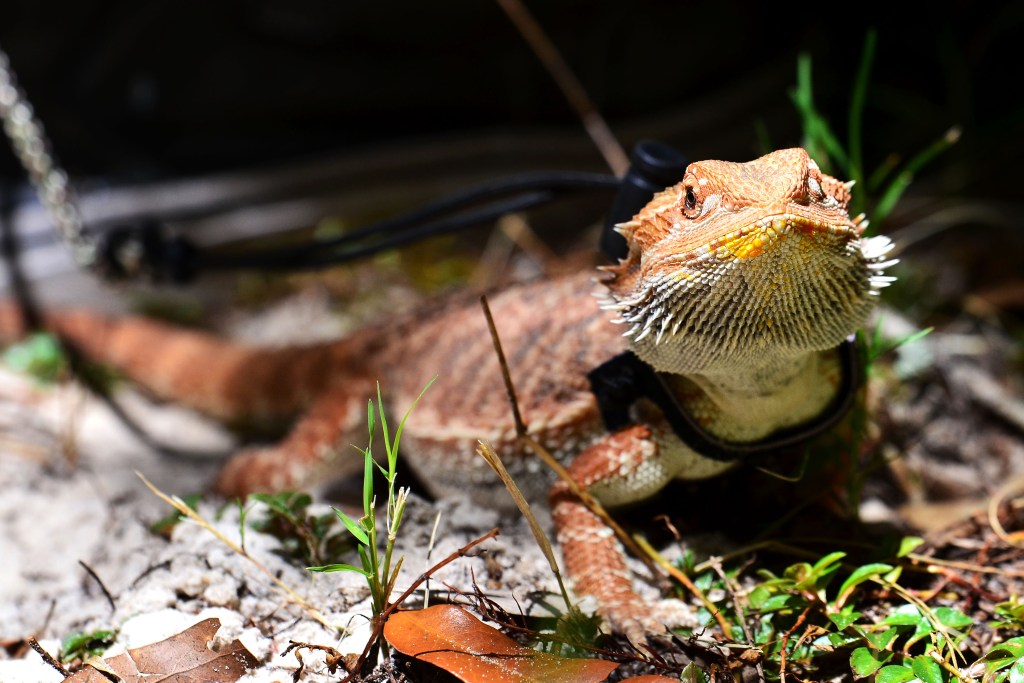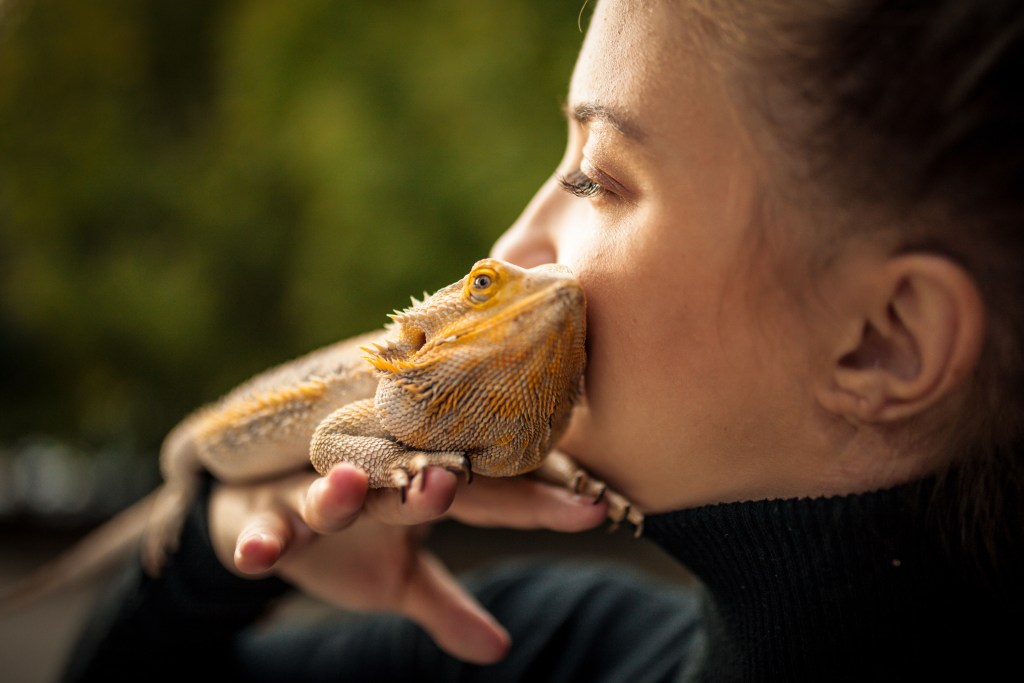Everyone understands that Fido needs to be walked, typically multiple times per day. But many other animals enjoy an excursion to the great outdoors too — we’ve all seen cute pics of cats, bunnies, and even ferrets rocking a leash. Want to give it a try with your lizard? It is possible to walk a bearded dragon, and both of you can enjoy the experience, provided you don’t have dog-level expectations. It might take a little extra preparation, but with the right equipment, you can take a trip out to explore the wide world together.

Do beardies like to go on walks?
Well, define walks. You won’t be able to take your reptile out and do laps with him around the neighborhood. Make sure you only intend to go for a tiny outing and that you start really small. Truth be told, he’ll probably just look around a little bit and then decide to go back inside where it’s temperature and humidity-controlled and there’s unlimited free food. But you may find that he looks forward to these short jaunts into his natural habitat. If that winds up being the case, you should continue them even though it’s not the same as a “real” romp.
What type of harness does my bearded dragon need?
Especially at first, you’ll need some way to secure your animal, and that’s where the harness comes in. Just as you’d put your dog or cat on a leash attached to a collar, so too you need something to maintain control and keep track of your reptile. Don’t go outside without something to keep him close by since it only takes seconds to lose track of your pet, who can get away quickly and go under or over things you can’t. Some of these contraptions come in different sizes, and you can try a few out and see what works best for the both of you. Choose one specifically for this species, though — do not repurpose a mammal harness or try to make your own if he hasn’t tried it out yet. You need him to stay secure for the entirety of your expedition.
How do I know if my beardie is comfortable?
You certainly want to ensure that the harness fits and that you aren’t dragging him around, much as you would with any other pet. On top of that, though, check the temp outside before scheduling your journey. It needs to be extremely warm for him to do well outdoors. As in, well into the 80s preferably with a gentle sun beating down. Don’t go out in the rain or cold as that does not match his natural habitat, which is often the desert and other warm climates. However, he also needs the opportunity for a cooldown at a moment’s notice. Stay within reach of some shade as that will allow him to escape there as needed. Along these lines, keep the walks short to start, maybe five or 10 minutes until you adjust to his preference.

What else can I do with my lizard instead?
Go ahead and give the walk a shot, but there’s a decent chance your beardie won’t take to it. If not, don’t despair. There are so many other games you can try out that might wind up being more fun for the pair of you. Get some toys like a ball or a laser pointer to play a few games with your beardie. Or you can give more adventurous games a shot like hunting and swimming. To do any of these things, you’ll have to slowly get her used to you and to being handled. That can be a fun activity in-of-itself.
Walking bearded dragons could also be reframed as carrying them, since your lizard may end up doing very little stepping around at all. When you decide to take on a small baby reptile or even an egg, you know you’re signing up for his lifetime of care. That means that you will find many ways to get your beardie the proper exercise and enrichment over the course of the decade that she lives. Mix things up! You don’t need to stick with the walks if it doesn’t work well or you can put walks aside for a bit and come back at a later date. Your beardie just wants to stay active.
Editors' Recommendations
- What causes high pH in an aquarium? We’ll walk you through getting your tank levels in check
- Can you make a profit breeding your bearded dragon?
- Can snakes swim? Here’s what you need to know about how these legless creatures move through water
- Is your snake bored? How to tell (and why you should care)
- Don’t kill your fish: How to prepare your aquarium before vacation




